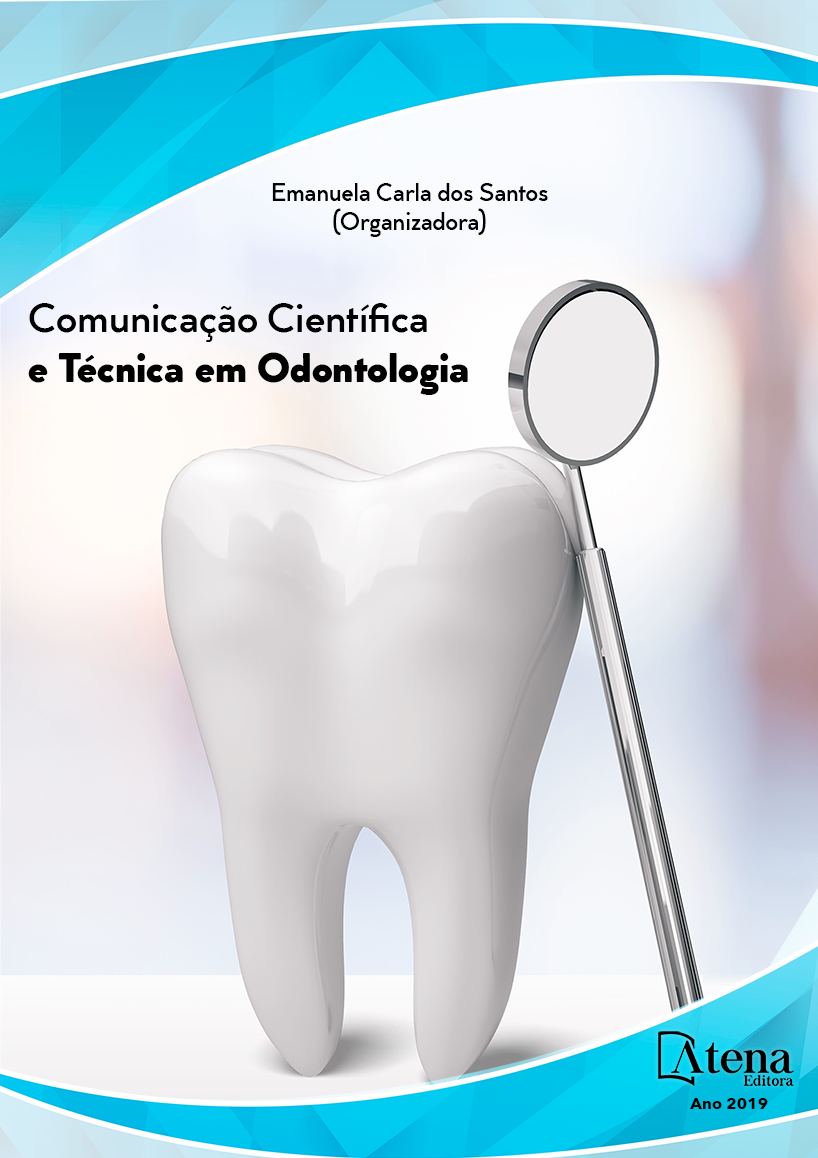
IMPACTO DE DIFERENTES INSTRUMENTOS ROTATÓRIOS NA DISTRIBUIÇÃO DE ESTRESSE DURANTE O TRATAMENTO DE CANAIS RADICULARES
Objetivo deste estudo foi o uso
da análise fotoelástica para avaliar o nível de
estresse gerado por diferentes instrumentos
rotatórios, com diferentes cinemáticas, utilizados
durante o tratamento de canais radiculares. Vinte
e quatro pré-molares humanos maxilares foram
acessados e os canais submetidos ao preparo
biomecânicao, livre de preparo cervical. As
amostras foram distribuídas aleatoriamente em
4 grupos experimentais (n = 6) de acordo com
o sistema utilizado para preparação de canais
radiculares: GPT-ProTaper Next(Dentsply Tulsa
Dental, Tulsa, OK), GOS-OneShape(Micro
Mega, Besançon, França). GWO-WaveOne
Gold(Dentship Maillefer, Baillagues, Suíça)
e GTF-TF Adaptive(SybronEndo, Orange,
CA). Um polariscópio de transmissão plana
foi utilizado na análise de franjas e todo o
procedimento de preparo do canal radicular
foi registrado por uma câmera. O método
Tardy foi utilizado para quantificar a ordem de
franja (n). Verificou-se que todos os grupos
promoveram um aumento significativo no nível
de estresse dado pelo preparo mecânico dos
canais radiculares. Quantitativamente, não
houve diferença estatística significante entre
os grupos(p<0,05). No entanto, na análise
qualitativa, foi observado que os grupos GPT
e TF Adaptive causaram níveis mais altos de
estresse em comparação com os demais grupos.
Assim, o uso da análise fotoelástica resultou
em um método consistente para avaliação do
estresse causado pelo tratamento endodôntico. Todos os sistemas utilizados para o
preparo dos canais radiculares, independentemente da sua cinemática, resultaram no
acúmulo de estresse, porém em diferentes concentrações ao longo da raiz do dente
e em níveis distintos de acordo com o instrumento, fatores que podem influenciar no
dano ao dente.
IMPACTO DE DIFERENTES INSTRUMENTOS ROTATÓRIOS NA DISTRIBUIÇÃO DE ESTRESSE DURANTE O TRATAMENTO DE CANAIS RADICULARES
-
DOI: 10.22533/at.ed.29619010412
-
Palavras-chave: Biomecânica, Análise de fotoelasticidade, Distribuição de estresse, Preparo do canal radicular.
-
Keywords: Biomechanics, Photoelasticity analysis, Stress distribution, Root canal preparation.
-
Abstract:
The aim of this study was purposing the use of photoelastic analysis to
evaluate the level of stress generated by different rotary instruments, with different
kinematics, utilized during root canal treatment. Twenty-four human maxillay premolars
were prepared and the canals submitted to the biomechanical preparation, free of
cervical preflaring. The samples were randomly assigned to 4 experimental groups
(n=6) according to the system used for root canal preparation: GPT–ProTaper Next
(Dentsply), GOS–OneShape(Micro Mega), GWO–WaveOne Gold(Dentsply Maillefer)
and GTF–TF Adaptive(SybronEndo). A plane transmission polariscope was used in
the analysis of fringes and all the root canal preparation procedure was recorded by a
digital camera. The Tardy method was used to quantify the fringe order(n). It was found
that all groups promoted a significant increase in the level of stress by mechanical
preparation of canals. Quantitavely, there was no difference statistically significant
between the groups(p<0.05). However, in the qualitative analysis, it was observed that
GPT and TF Adaptive instruments can cause higher levels of stress compared with the
GWO and GOS. So, the use of photoelastic analysis resulted in a consistent method
for evaluation of stress caused by endodontic treatment. All systems used to root canal
preparation, independently of your kinematic, resulted in the accumulation of stress,
but in different concentrations along the root of the tooth and in distinct levels according
to the kinematic instrument, factors that can influence in the damage to the tooth.
-
Número de páginas: 15
- Júlia Adornes Gallas
- Shelyn Akari Yamakami
- Igor Bassi Ferreira Petean
- Ana Paula Macedo
- Aline Evangelista Souza-Gabriel
- Manoel Damião de Sousa Neto
- Regina Guenka Palma-Dibb
- Regina Guenka Palma- Dibb


